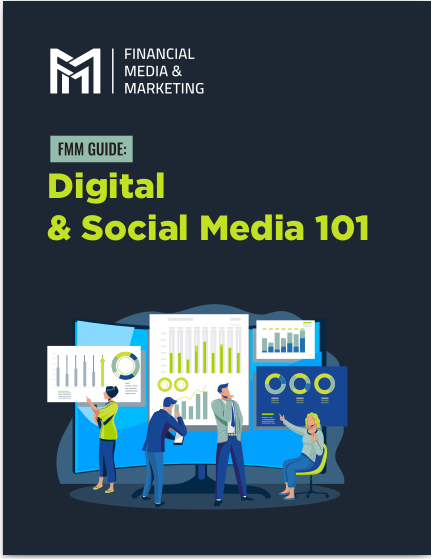Key Takeaways:
- An SEO-friendly website design is crucial for improving search engine rankings and attracting potential clients.
- Enhancing user experience and optimizing technical aspects of your website can significantly boost your SEO performance.
You Need to Have an SEO-Friendly Website Design as a Financial Advisor
In the competitive landscape of financial advisory, having a well-designed, SEO-friendly website is crucial for attracting potential clients and standing out in search engine results. An optimized website can improve your search rankings, increase organic traffic, and enhance user experience, ultimately leading to higher conversion rates. Here’s a comprehensive guide on why and how to create an SEO-friendly website design as a financial advisor.
Essential Features of an SEO-Optimized Website
Creating an SEO-friendly website involves incorporating key elements that enhance both search engine visibility and user engagement. Here are some essential features to focus on:
1. Mobile Responsiveness
With the increasing number of users accessing websites via mobile devices, having a mobile-responsive design is non-negotiable. Google’s mobile-first indexing prioritizes mobile-friendly sites, making this a critical factor for SEO.
- Flexible Layouts: Use responsive design techniques to ensure your website adjusts seamlessly to different screen sizes and devices.
- Easy Navigation: Simplify navigation menus and buttons for mobile users to improve usability.
- Mobile-Friendly Content: Ensure that all content, including images and videos, loads quickly and displays correctly on mobile devices.
2. Fast Loading Speeds
Page loading speed is a significant ranking factor for search engines. A slow-loading website can drive visitors away and negatively impact your SEO performance.
- Optimize Images: Compress and resize images to reduce load times without sacrificing quality.
- Minimize HTTP Requests: Combine files such as CSS and JavaScript to reduce the number of requests.
- Use a Content Delivery Network (CDN): Distribute your website’s content across multiple servers worldwide to improve loading speeds.
3. Clear Site Architecture
A well-structured website makes it easier for search engines to crawl and index your pages, improving your SEO rankings.
- Logical Hierarchy: Organize your website’s content into a clear hierarchy with categories, subcategories, and individual pages.
- Breadcrumb Navigation: Implement breadcrumb navigation to help users and search engines understand the structure of your site.
- XML Sitemap: Create and submit an XML sitemap to search engines to ensure all your pages are indexed.
4. Secure Website (HTTPS)
Having a secure website is essential for protecting user data and building trust with your visitors. HTTPS is also a ranking factor for Google.
- SSL Certificate: Install an SSL certificate to encrypt data and secure your website.
- Secure Forms: Ensure all forms on your website are secure, protecting sensitive information such as contact details and financial data.
5. User-Friendly URLs
SEO-friendly URLs are concise, descriptive, and easy to read, helping both users and search engines understand the content of your pages.
- Descriptive Keywords: Include relevant keywords in your URLs to improve search engine visibility.
- Avoid Special Characters: Use hyphens instead of underscores or special characters to separate words.
- Keep It Short: Shorter URLs are easier to read and share, improving user experience.
Improving User Experience to Boost SEO Performance
Enhancing user experience is not only beneficial for your visitors but also for your SEO. Search engines prioritize websites that provide a positive user experience, leading to higher rankings. Here’s how to improve user experience:
1. High-Quality Content
Content is king in the world of SEO. Providing high-quality, relevant content can engage visitors and improve your search rankings.
- Informative Articles: Write in-depth articles on topics relevant to your audience, such as retirement planning, investment strategies, and tax tips.
- Regular Updates: Keep your content fresh and up-to-date to maintain relevance and authority.
- Multimedia Content: Incorporate images, videos, and infographics to make your content more engaging and shareable.
2. Easy Navigation
A user-friendly navigation system helps visitors find the information they need quickly and easily.
- Clear Menus: Design intuitive menus with clear labels and logical groupings.
- Search Functionality: Implement a search bar to allow users to find specific content quickly.
- Internal Linking: Use internal links to guide users to related content and improve site structure.
3. Readable Design
A clean, readable design enhances user experience and keeps visitors on your site longer, which can positively impact your SEO.
- Whitespace: Use whitespace effectively to avoid clutter and improve readability.
- Typography: Choose legible fonts and maintain a consistent font size and style throughout your site.
- Contrast: Ensure sufficient contrast between text and background to enhance readability.
4. Interactive Elements
Interactive elements can engage users and encourage them to spend more time on your site, which can boost your SEO.
- Forms and Surveys: Use forms and surveys to gather information and feedback from visitors.
- Calculators and Tools: Offer interactive financial tools, such as retirement calculators or investment planners.
- Live Chat: Implement live chat functionality to provide instant support and answer visitor queries.
5. Social Media Integration
Integrating social media into your website can enhance user experience and drive traffic from social platforms.
- Social Sharing Buttons: Include social sharing buttons on your content to make it easy for users to share with their networks.
- Social Media Feeds: Display live feeds from your social media accounts to keep your content dynamic and engaging.
- Encourage Engagement: Promote social media engagement by inviting visitors to follow your accounts and participate in discussions.
Technical SEO Best Practices for Your Website
Technical SEO involves optimizing the backend of your website to improve its performance and search engine visibility. Here are some technical SEO best practices:
1. Optimize Meta Tags
Meta tags, including title tags and meta descriptions, provide essential information to search engines and users about your content.
- Title Tags: Write concise, keyword-rich title tags that accurately describe the content of each page.
- Meta Descriptions: Craft compelling meta descriptions that encourage users to click on your links in search results.
- Header Tags: Use header tags (H1, H2, H3) to structure your content and highlight key points.
2. Implement Schema Markup
Schema markup is a type of structured data that helps search engines understand the content of your pages, leading to enhanced search results.
- Rich Snippets: Use schema markup to create rich snippets that display additional information, such as star ratings, event details, and product prices.
- Local Business Schema: Implement local business schema to provide search engines with detailed information about your financial advisory practice, such as address, phone number, and operating hours.
3. Improve Crawlability
Ensure that search engines can easily crawl and index your website to improve your search rankings.
- Robots.txt File: Use a robots.txt file to control which parts of your site search engines can crawl.
- Canonical Tags: Implement canonical tags to prevent duplicate content issues and consolidate link equity.
- Broken Links: Regularly check for and fix broken links to ensure a smooth user experience and maintain your site’s SEO health.
4. Enhance Site Security
A secure website is crucial for protecting user data and building trust with your visitors, which can positively impact your SEO.
- Regular Updates: Keep your website’s software, plugins, and themes up-to-date to prevent security vulnerabilities.
- Security Plugins: Use security plugins to monitor your site for potential threats and protect against attacks.
- Backup Solutions: Implement regular backups to ensure you can quickly restore your site in case of a security breach.
5. Monitor and Analyze Performance
Regularly monitoring and analyzing your website’s performance can help you identify areas for improvement and measure the effectiveness of your SEO efforts.
- Google Analytics: Use Google Analytics to track key metrics, such as traffic, bounce rates, and conversion rates.
- Google Search Console: Monitor your site’s performance in search results and identify any issues that need addressing.
- SEO Tools: Use SEO tools like SEMrush, Ahrefs, and Moz to conduct regular audits and gain insights into your site’s performance.
Conclusion
Creating an SEO-friendly website design is essential for financial advisors looking to improve their search engine rankings, attract more potential clients, and grow their practice. By incorporating essential features such as mobile responsiveness, fast loading speeds, clear site architecture, and secure protocols, you can enhance your website’s performance and user experience. Additionally, focusing on high-quality content, easy navigation, readable design, interactive elements, and social media integration can further boost your SEO performance. Implementing technical SEO best practices, such as optimizing meta tags, implementing schema markup, improving crawlability, enhancing site security, and monitoring performance, will help you achieve long-term success in search engine rankings. Start optimizing your website today to reap the benefits of higher visibility and increased organic traffic.
Contact Information:
Email: [email protected]
Phone: 8777993433
Bio:
Stan Collins is a Marketing Specialist based in Arizona that focuses primarily on online branding and digital marketing. In addition to helping financial professionals, real estate agents, and other business professionals generate leads and perfect their online identities, Stan Collins also writes educational content about marketing.










